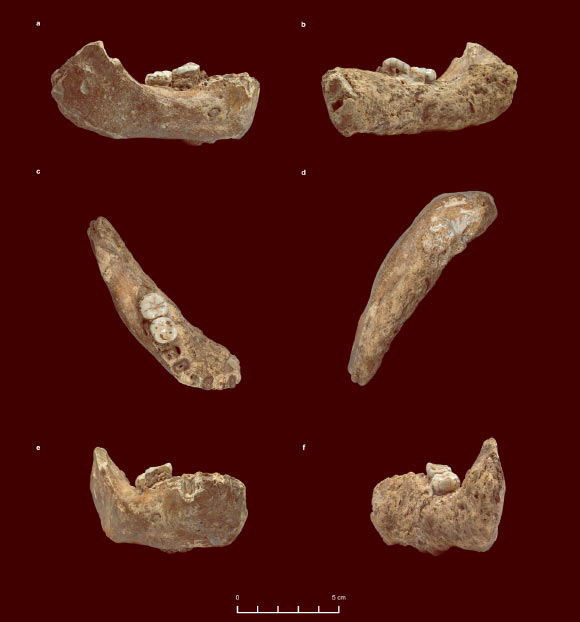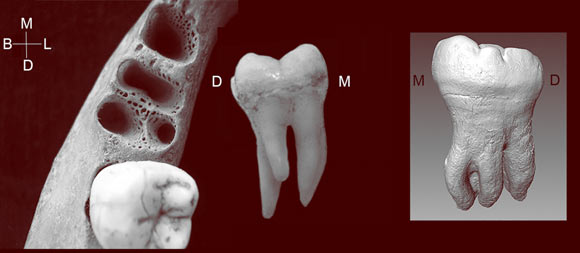A 3-rooted lower molar, a rare trait primarily found in modern Asian lineages, was previously thought to have evolved after Homo sapiens dispersed from Africa. A new analysis of the so-called Xiahe mandible, a 160,000-year-old fossilized Denisovan jawbone from Baishiya Karst Cave, the Tibetan Plateau, China, points to a different evolutionary path.

Denisovans were probably dark-skinned, unlike the pale Neanderthals. The picture shows a Neanderthal man. Image credit: Trustees of the Natural History Museum, London.
The 3-rooted lower molar is rare — less than 3.5% occurrence — in non-Asians.
In contrast, its presence in Asian-derived populations can exceed 40% in China and the New World.
“The trait’s presence in the fossil suggests both that it is older than previously understood and that some modern Asian groups obtained the trait through interbreeding with Densiovans, a sister group of Neanderthals,” said New York University’s Professor Shara Bailey, the lead author of a paper published in the Proceedings of the National Academy of Sciences.

The Xiahe mandible with adhering carbonate crust. Image credit: Chen et al, doi: 10.1038/s41586-019-1139-x.
In a previous study, Professor Bailey and colleagues analyzed the Xiahe mandible and concluded that Denisovans occupied the Tibetan Plateau long before Homo sapiens arrived in the region.
The new study centered on the molar in the specimen, with the aim of understanding the relationship between archaic humans who occupied Asia more than 160,000 years ago and modern Asians.

The 3-rooted lower first molar alveolar sockets showing distolingual position of accessory root and the 3-rooted lower first molar (lingual view). Inset: 3-rooted lower second molar of the Xiahe Denisovan individual (lingual view). M – mesial, L – lingual, D – distal, B – buccal. Image credit: Christine Lee, California State University / Bailey et al, doi: 10.1073/pnas.1907557116.
“In Asia, there have long been claims for continuity between archaic and modern humans because of some shared traits. But many of those traits are primitive or are not unique to Asians,” Professor Bailey said.
“However, the 3-rooted lower molar trait is unique to Asian groups.”
“Its presence in a 160,000-year-old archaic human in Asia strongly suggests the trait was transferred to Homo sapiens in the region through interbreeding with archaic humans in Asia.”
_____
Shara E. Bailey et al. Rare dental trait provides morphological evidence of archaic introgression in Asian fossil record. PNAS, published online July 8, 2019; doi: 10.1073/pnas.1907557116







